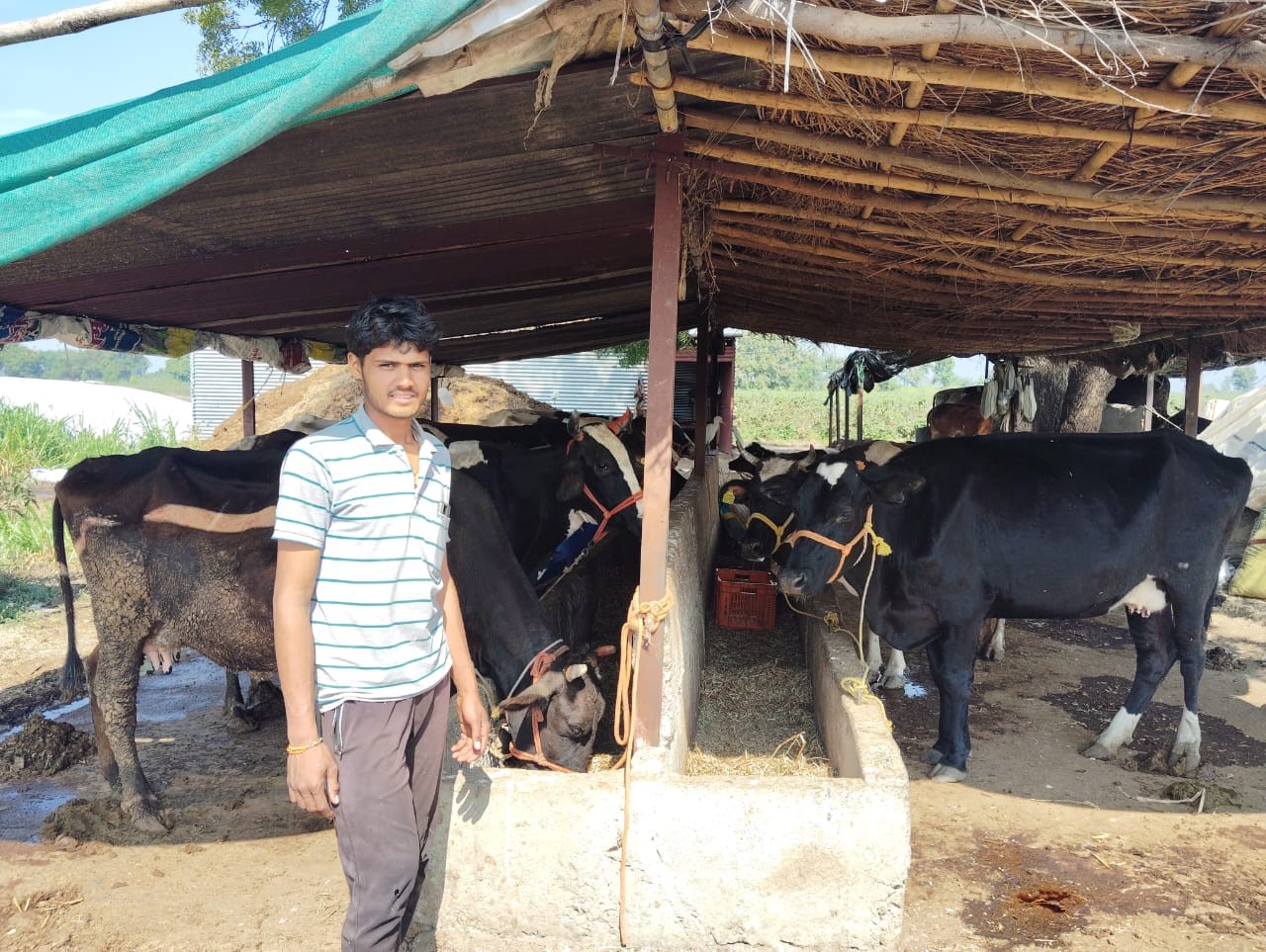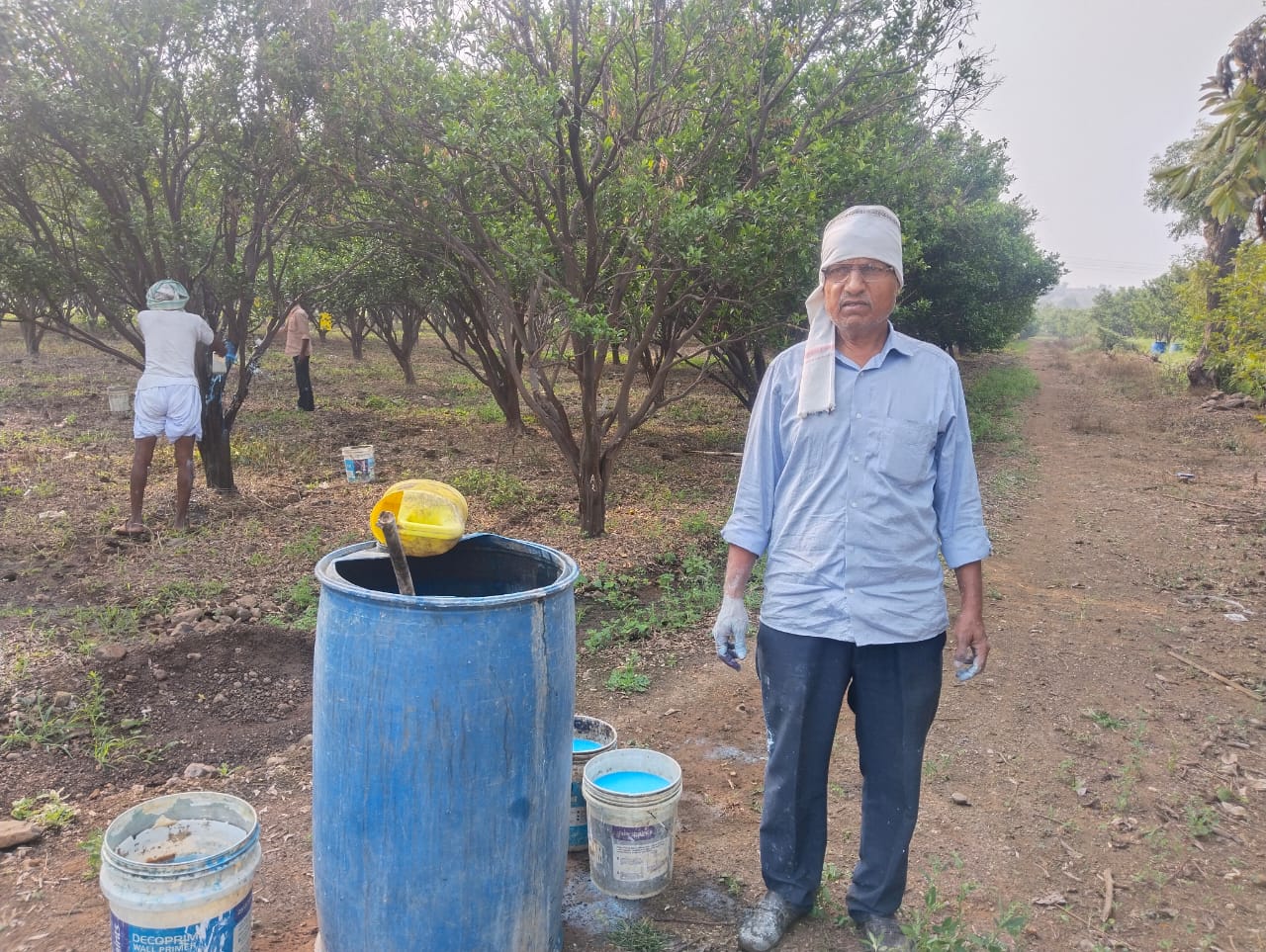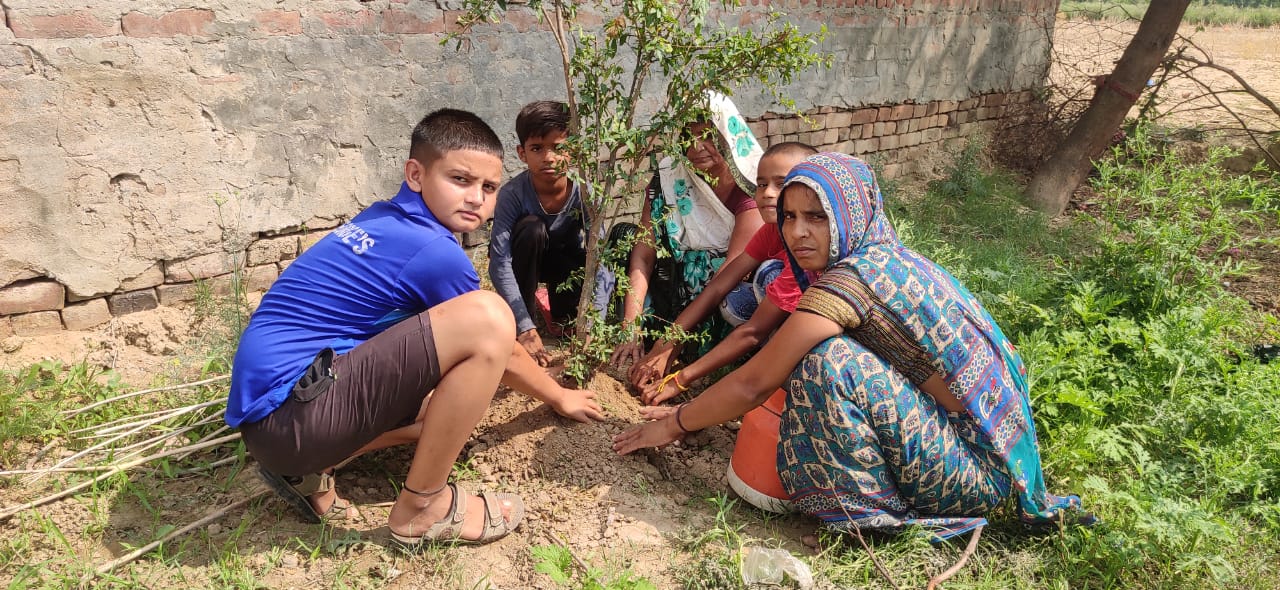HDFC Bank Parivartan, the bank’s flagship CSR programme, has transformed more than 9.8 crore lives in over a million households across the country
Charulata, aged 35, works as a farm labourer in Thoothukudi district in Tamil Nadu. Her husband works in the city as a security guard, and she raises their two children at home. It is incredibly hard to make ends meet because of limited economic opportunities available in her village.
Her situation is common for 48% women living in 664,369 Indian villages. Almost 75% of such rural women are agricultural workers. India, home to one-sixth of all humanity, is the key to the long-term success of the 2030 SDG goals. However, attaining SDG goals without a robust rural development program focused on bringing rural women to the centre stage will be challenging.
This is where HDFC Bank Parivartan, the bank’s flagship CSR programme, works towards the socio-economic development of the society by sustainably empowering communities. It focuses on six areas: Environment, Rural Development, Education, Skill Development & Livelihood Enhancement, Healthcare & Hygiene, and Financial Literacy. It has transformed more than 9.8 crore lives in over a million households across the country.
Amidst the wide range of interventions the Bank is undertaking, it is notable to see the sustainable change in the lives of people through the livelihood interventions. Following are three such initiatives undertaken by the Bank that are innovative, sustainable and scalable.
Water Hyacinth Handicraft project
Local Economic Activation Project (LEAP)
Three-Tier Vertical Livelihood Structure Model
From Weeds to Wealth: Water Hyacinth Handicraft Project
In January 2022, the Water Hyacinth Handicraft project was Launched for 60 women beneficiaries. They were given specialized craft tool kits to use during their training and beyond. The project taught them how to make handicraft from water hyacinth, a weed that is abundant in more than half of the 400 villages in Thoothukudi district.
They were trained in correct ways of harvesting, grading, drying, and storing the water hyacinth stems. They were also introduced to four types of weaving for making baskets and flat products. Sewing machine were given to add value to the products. The training included stitching removable lining in fabric for laundry baskets and handbags. Wooden handles and woven multi-coloured straps were specially designed to match the products.
The training advanced to dyeing the stem, welding and braising the metal armature, designing pleated techniques, and tufted products. The women were also trained in segregation, drying, and storage of the stem in white gunny bags for several days.
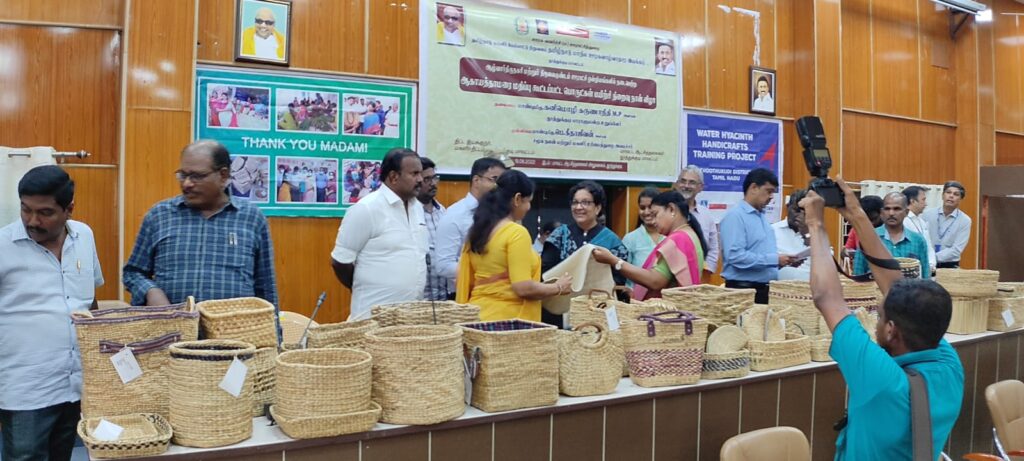
These products were also exhibited in Tuticorin and Coimbatore in August 2022. The project aimed to be sustainable and scalable by training ten people from each village in Thoothukudi district to produce commercially viable water hyacinth handicraft products. The government is planning to develop the model as a full-fledged program by forming a cooperative where skilled artisans would work and promote the Water Hyacinth Handicraft.
The project weaver groups shared sample products with IKEA through Ramesh Flower Company. However, the shortage of skilled weavers presents a challenge in meeting demand. Director of Industries & Commerce visited the project villages and recognized the potential of water hyacinth products and the skilled weavers. The department conveyed its interest to extend the project to further develop and scale it. In addition to the Industries & Commerce Ministry, the District Collector of Thoothukudi district intends to extend the project to six neighbouring villages, expanding its impact.
LEAPing Towards Economic Activation: Local Economic Activation Project (LEAP)
LEAP is empowering rural women through the creation of efficient, transparent and income-generating entrepreneurial platforms that facilitate sustainable livelihood enhancement. LEAP is taking the Self-Help-Group (SHG) movement to the next level by aggregating them in clusters for enterprises/income generation activities. The project was launched in 2022, and it aspires to accelerate the economic empowerment of women in the farm and non-farm sectors.
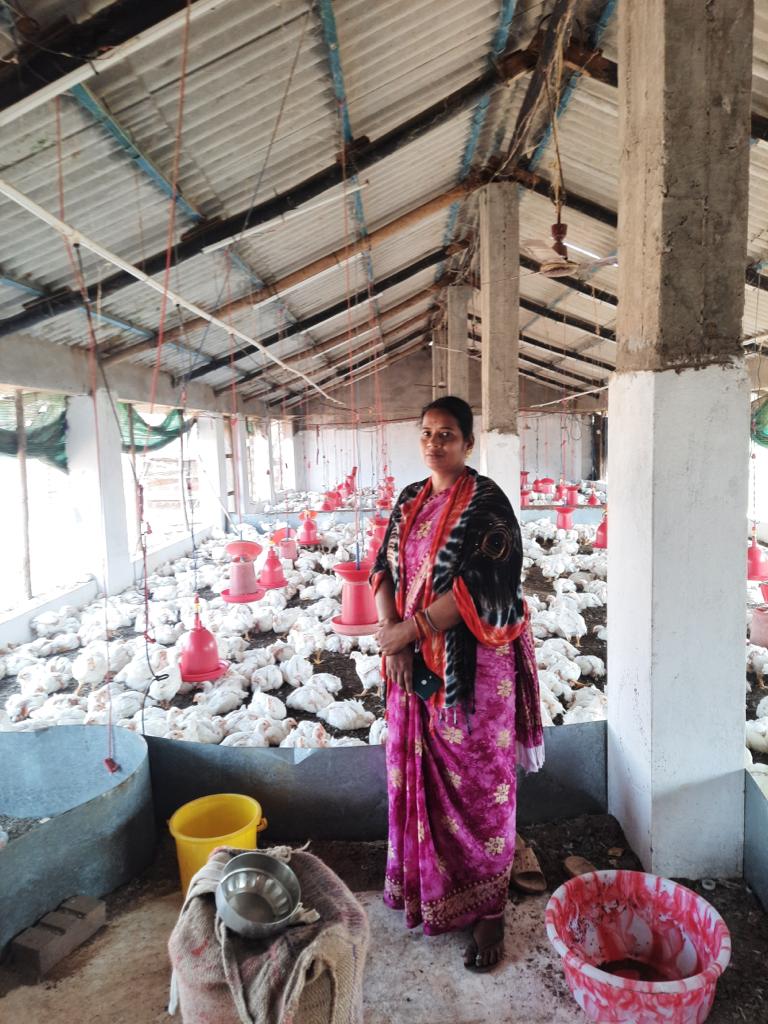
LEAP aims to achieve various objectives over four years, including increasing the real income of direct beneficiaries by 40%, benefiting over 500,000 women farmers and artisans spread over 120 clusters, leveraging new investments, including government schemes and private-sector investments, and enabling partnerships at the national, state and local level.
LEAP’s three-pronged income enhancement strategy includes improving income from existing occupations, adding another income source, and convergence with government schemes, based on two fundamental pillars: cluster planning and a market-led approach. LEAP has made significant progress at the district and state levels in terms of outcomes, income increase, building stronger institutions, enabling convergence, and ensuring the creditworthiness of the borrowers. The project has extensive backing from government departments, and financial institutions have partnered with POs to offer credit and financial support for input and forward linkages.

The LEAP programme is being implemented in 24 districts in Assam, Chhattisgarh, Jharkhand, Odisha, Punjab and West Bengal. The team has been receiving tremendous support from respective state governments and their departments, such as the Department of Agriculture, Horticulture, Rural Development, and Planning. A unique feature of this project is digital literacy, transparency, and equipping rural women with greater digital know-how and capabilities, enabling them to function independently in the long run without any external support.
LEAP’s impact so far includes the mobilization of 35,117 women beneficiaries into POs, the registration of 95 POs, INR 35 million share capital by PO members, and 11 sanctioned Common Facility Centers. LEAP has leveraged approximately INR 260 million, sanctioned INR 10.05 million in credit, recorded 9,273 digital transactions, availed 23,716 central and state schemes, and trained 22,179 women beneficiaries on best practices.
Building Dreams, Floor by Floor: Three-Tier Vertical Livelihood Structure Model
Ajay Kumar lives in Gondey, Pratapgarh, in Uttar Pradesh, with his parents and two younger brothers. He is physically challenged and comes from a landless family. His daily wages are his only source of income. He abandoned studies to support his family. He is discriminated due to his disability.
The bank created a three-tier vertical livelihood structure model to provide a stable source of income for him. HRDP Pratapgarh built two vertical livelihood structures (as a prototype) for three livelihood activities simultaneously. 1) Fisheries 2) Poultry; 3) Goats.

The structure has three floors to breed fish on the ground floor, poultry on the first floor, and goats on the second floor. The chickens eat goat waste, and fish eat chicken and goat waste. Additionally, chick and fish feeds are also given to boost their growth and reduce risk from diseases.
This livelihood structure demonstrates other village households to choose a model for a substantial revenue. Once developed, this structure will last at least 30 years for a one-time investment. This model could be shared with Uttar Pradesh State Rural Livelihood Mission for a state level team for large-scale adoption as a group enterprise with the most vulnerable/marginalized families.
By lowering investment costs with landless families/people with physical disabilities, this model can be expanded up in new HRDP clusters.
In conclusion, one can see the transformative impact of all three initiatives–Water hyacinth projects, LEAP and the three-tier livelihood model. The Bank customised solutions leveraging locally available resources, markets and stakeholders. This helped persuading government and agencies to support the projects and create long-term impact. All the three projects also influenced cultural perspectives about women and people with disabilities. HDFC Bank Parivartan is committed to help India achieve SDG goals through its robust rural development focus, and take all stakeholders together in its stride.


